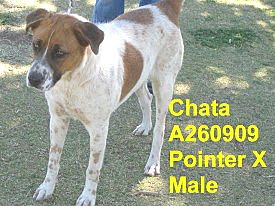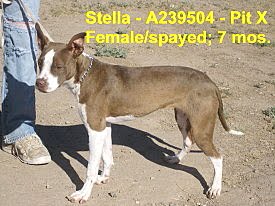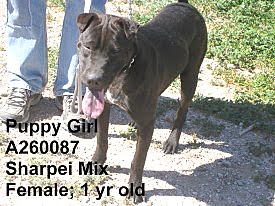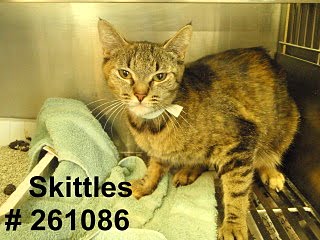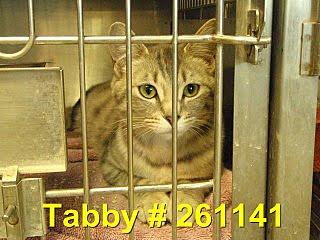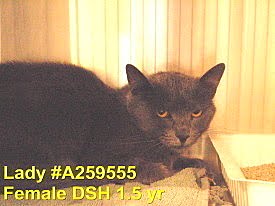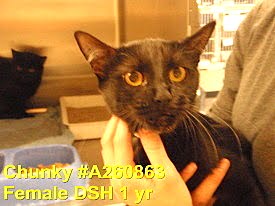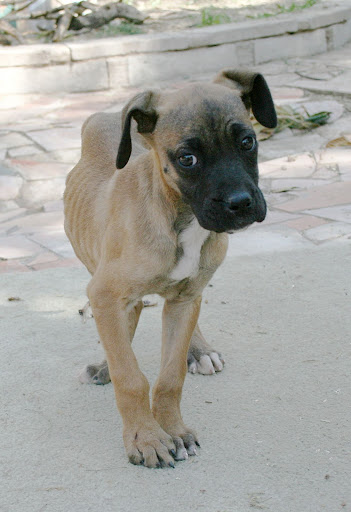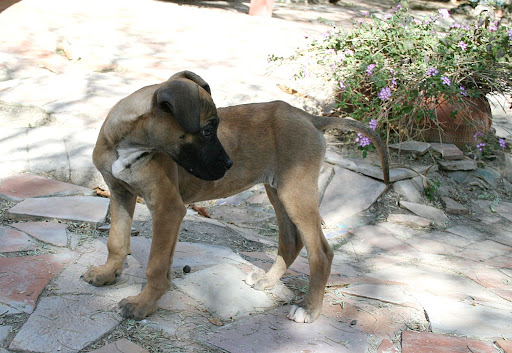What I love most about the internet is that you can constantly expand your horizons and explore. One thing explored always takes you to something else, equally wonderful. Tonight in looking for more info on the Marine War Dogs, I stumbled upon a wonderful website about K-9 memorials.
On one of the memorials: "May you always run fast, bite hard, and fear nothing."
I love that.
Well, keep in mind it was on a police dog's memorial.
Please go and explore this wonderful site. It has information on war dogs, and police K-9's.
http://www.cpwda.com/k9_monuments.htm
Thursday, May 13, 2010
Military Channel airs wonderful show about the Dogs of WWII.

I saw a great show tonight on the military
channel about some of the Marine war dogs of WWII.
This show was about dogs who served on Guam.
According to the show, all but 4 of the surviving dogs were either returned to their owners, or they stayed with their soldier handlers. All were trained by their handlers, and none had had any prior service as war dogs or guard dogs.
Many of the dogs were Dobermans, but there were some shepherds, and mixed breed dogs. There was even a Siberian Husky.
They were much loved and appreciated heroes during the war.
This article is about the sculptor who did this memorial. The dog's name was Kurt.
The name of the memorial is "Always Faithful"
Semper Fi
Sculptor Salutes War Dogs
related: U.S. War Dogs Association Honoring Canines Who Serve
November 10, 2009
By Faiza Elmasry
Voie of America
Since dogs were domesticated some 14,000 years ago, they have shared our homes, our food and our wars. An estimated 100,000 dogs have served in the United States military over the past century. They have been trained to carry out a variety of assignments, from recognizing mines and booby traps, to serving as sentries, messengers and scouts. The heroic stories of war dogs have inspired artist Susan Bahary, who created several sculptures honoring them.
 Photo: The hero behind Always Faithful is a Doberman pinscher named Kurt
Photo: The hero behind Always Faithful is a Doberman pinscher named KurtDogs and other animals have always inspired Bahary
"They are very loving to us, very giving," Bahary says. "They have tremendous talents to help us. In addition to that I've always been very proud of my country and having learned more about the war dogs and the incredible sacrifices that were made by them and their handlers I've only become that much more patriotic," she adds.
Kurt is cast in bronze 'Always Faithful' statue
In the early 1990s, Bahary had the opportunity to translate her fascination and passion into a work of art, when she was chosen to create a war dog memorial on the Pacific island of Guam, the site of fierce fighting during World War Two. The hero behind the sculpture is a Doberman pinscher named Kurt, part of a war dog platoon that served in the South Pacific. The dogs were trained to detect enemy soldiers and protect the U.S. marines from being ambushed. Twenty-five of the dogs were killed during the battle for Guam.
"When the first dog was lost," Bahary explains, "he was hit by a piece of shrapnel - Dr. William Putney, a veterinarian, worked on him, tried to save him, but he wasn't able to. Finally, he was so exhausted, he put his head down on Kurt and fell asleep. He was awakened by his commander. Dr. Putney said, 'what should I do with this dog?' He said, 'put him in the cemetery with the other marines down the beach. He was a marine just like the rest of them. He deserves a place of honor.' That was the beginning of the war dog cemetery in Guam."
Bahary says that when Dr. Putney visited the cemetery 40 years later, he was appalled at its condition.
"He found it to be a disgrace and a dishonor," she says. "It was overrun with weeds and in disrepair. He said, 'before I go to my grave, I want to make sure these dogs have a place of honor they deserve.
That's how the idea of creating a war dog memorial was born. Bahary's sculpture, dedicated in 1994, features a life-size bronze Doberman on a granite base, engraved with the names of the 25 dogs killed in action. It's called Always Faithful.
 Photo: Smoky helped engineers build an airbase in the Philippines
Photo: Smoky helped engineers build an airbase in the Philippines"We wanted to have the Doberman dog who was the official breed of the marine corps in WWII, in upright reclining position on the base," she says. "The idea was to have his leg raised to show that these dogs are always ready and always on alert and loyal. When I found out that the motto of the Marine Corps was 'Semper Fidelis,' 'Always Faithful,' I said, 'Wow, that's the name I was looking for this monument.
Smoky, a tiny hero, had a towering spirit to serve
Half a world away, in the U.S. state of Ohio, is a monument honoring Smoky, another brave dog who served in World War II. The tiny Yorkshire terrier was found in a foxhole in a New Guinea jungle. She accompanied soldiers on 12 combat missions and was awarded eight battle stars. She survived 150 air raids. Bahary says Smoky even helped engineers build an airbase in the Philippines.
"She was able to pull a telegraph wire," Bahary says. "They attached it to her. She went through a 70 foot long [drain] pipe that was only 8 inches tall and pulled this under an air strip, which saved days of labor and safeguarded 40 warplanes at the time."
The sculpture Bahary created in the memory of this brave dog was dedicated on Veterans Day, in 2005.
Bill Wynne was the soldier who trained Smokey more than 60 years ago.
"It's a beautiful sculpture that Susan made, he says. "It's 'Smoky' [sitting] in a helmet, a GI helmet. It's a life size bronze [sculpture]. I wanted it kept to the size of the dog so that people see really how tiny she was. She was only 7 inches at the shoulder and she weighed 4 pounds."
Wynne says he is proud that Smoky went on to become the first therapy dog.
"I trained her in obedience trials, which is about a six to 10 week course," he recalls. "In two days the dog was doing everything [he was] supposed to be doing after weeks, which is remarkable. I continued through the whole campaign as we were moving from New Guinea, Biak Island, Luzon, Okinawa and Korea. By the time I finished, two years later, the dog could do well over 200 tricks. In fact she could do a 45 minute show without using any equipment. She could spell her name out of letters and roll a drum. She also learned how to play dead and sing," Wynne says.
Photo: The close bond between soldier and service dog is what artist Bahary seeks to capture in her monuments
Jacco detects bombs in Iraq
Dogs are playing an increasingly important role in the military today, says former Staff Sgt. Ricky Hooker. She served as an Air Force dog handler for six years with Jacco, a Belgian Malinois.
"While deployed overseas, his job would be to guard airbase whatever base we were at," she says. "For me, it was Kirkuk in Iraq.
Jacco was trained to find hidden explosives and weapons.
"Jacco is a bomb and apprehension dog," he says. "He did both. While in Iraq he was in 175 rocket attacks, six 'I.D.' explosions on his convoys and numerous gun fights. He found numerous weapons, a car bomb and received an Army Achievement Medal. He slept in the room with me, so he got to relax a little bit. But, he is the best partner in the world. As you put your life on the line, he is going to protect you. It's unbelievable the relationship you have with him," Hooker says.
It's that close bond between soldiers and their brave, faithful dogs that artist Susan Bahary has sought to capture and honor in her monuments to America's canine battle heroes.
http://www.nationalwardogsmonument.org
http://www.voanews.com/english/AmericanLife/2009-11-10-voa24.cfm
Monday, May 10, 2010
Grant Program to Help Families Care for Pets
| |||||||||
Sunday, May 9, 2010
This is the kill list folks, if you can help out, please call rescues.
Cats and Dogs on PACC Rescue List! (Please help by fostering!)
Date: 2010-05-09, 12:35PM MST
Reply to: comm-kt4tz-1732312376@craigslist.org
Are YOU one of those special people who like the up-lifting feeling of fostering and helping a homeless, ill or injured animal?
These animals are at risk when room runs out or the animals deteriorate. They do not receive treatment in Sick Bay.
THESE ANIMALS DO NOT DESERVE WHAT LIES AHEAD OF THEM IF THEY DO NOT GET RESCUED!
LOCAL RESCUES Need YOU to FOSTER an ANIMAL! There is NO one ELSE! RESCUES are FULL and NEED COMMITTED FOSTERS to continue taking in PACC LIST ANIMALS!
PLEASE FOSTER OR RESCUE ONE OF THESE WONDERFUL ANIMALS, THEY NEED YOUR HELP TO LIVE. CONTACT A LOCAL RESCUE IF YOU CAN OPEN YOUR HEART AND HOME TO ONE OF THE PACC RESCUE ANIMALS.
Each dog comes with a certificate for a free Vet visit.
D S5 260909 POINTER X F 1Y6M WHT/BRN CHATA URI
CHATA is a beautiful dog. He likes playing with people and other dogs. CHATA needs Vet treatment for URI>
|
We need Volunteers and Foster Families to help us save more!
We are a new rescue group, and we are looking for more fosters to help us rescue more of the animals on the kill lists from the pounds in the southern Arizona area. There are puppies, kittens, cats and dogs being killed every day for lack of a place to go. Can you take in one dog? We pay for all needed and pre-approved vet expenses for our rescue dogs. We will even provide you with pet food if needed. You do not need prior experience in fostering, we will teach you and be there to help you. Come join us, and experience the joy that there is in giving a life back to a dog. Email us at azdesertrottis@aol.com
| From My favorite photos |
FYI
In case you haven't read this. I'm just sending this to keep people informed, not to make recommendations)
Vaccinating Small Dogs: Risks Vets Aren’t Revealing
Here is a link to a small part of this study:
http://www.ncbi.
At last, a smoking gun . discovered pointing directly at Chihuahuas, Dachshunds, Maltese, Yorkies and other small dogs . in fact, pointed at all dogs receiving multiple vaccines during one clinic visit.
Many scientific studies and taskforce reports have altered my view of vaccination over the years, but none have stunned me as much as, "Adverse events diagnosed within three days of vaccine administration in dogs" by Drs. Moore, Guptill, Ward, et al. This two-year study of vaccine
reactions (from data gathered at 360 Banfield clinics in 2002 and 2003) concluded: "Young adult small-breed neutered dogs that received multiple vaccines per office visit were at greatest risk of a VAAE [Vaccine Associated Adverse Event] within 72 hours after vaccination." And that's
not all the report revealed.
In the study (published in JAVMA, the Journal of American Veterinary Medical Association in October, 2005), 1.2 million dogs received almost 3.5 million vaccine doses. Reactions reported within 3 days (as designated by computer codes) included nonspecific vaccine reactions, allergic reactions, urticaria (hives), anaphylaxis (severe, whole-body allergic reaction), cardiac arrest, cardiovascular shock and sudden death. For each 10,000 dogs vaccinating, 38 adverse reactions were reported.
You're probably thinking: just 38 reactions per 10,000 dogs? That's not too bad. But bear in mind that this study did NOT include: Reactions reported more than 72 hours after vaccination (thus eliminating reactions taking longer to develop or be discovered, such as injection site cancers, autoimmune diseases, skin diseases and other major conditions).
Reactions that occurred but were never reported by clients.
Conditions not recognized by the vet as vaccine reactions.
Conditions not selected for this study. (Seizures weren't on the list, nor were countless other common reactions.)
Conditions not recorded by the vet. The 2007 World Small Animal Veterinary Association (WSAVA) Vaccine Guidelines reports "gross under-reporting of vaccine-associated adverse events .."
Reactions in dogs also getting a heartworm shot, presumably because of the increased risk of reaction. (Currently,vets are warned not to give Proheart 6 with a vaccination. )
The study's researchers (6 of 7 were vets) recommended that veterinarians should communicate the increased risk of multiple vaccines to clients before obtaining their consent to vaccinate. At this writing, a full 4 years after the study's publication, I suspect few clients have actually been warned about the risk of multiple vaccines at one visit, or about special risks to smaller dogs. Were you ever warned?
Factors Increasing The Risk of the Vaccine Adverse Reaction
Body Weight
The reaction rate increased significantly as body weight decreased. That is, small dogs were at greatest risk for a reaction. Risk for dogs weighing 11 pounds or less was 4 times greater than the risk for dogs weighing 99+ pounds. Medium-sized dogs also had increased risk over larger dogs. For all vaccines and for the rabies vaccine given alone, the reaction rate for dogs weighing 22.2 to 99 lbs. was approximately half the rate of dogs weighing less than 22.0 lbs. Little dogs had 32+
reactions per 10,000; medium-sized dogs, 15+; large dogs, none.
Neutering/Spaying
Neutered dogs had a 27% to 38% greater risk versus sexually intact dogs.
Age
Dogs 1.5 to 2.5 years of age had a 35% to 64% greater risk of reactions (with rates increasing up to 2 years and declining thereafter) than puppies 2 to 9 months old. The risk was least for dogs 6 years of age and older.
Number of vaccines per office visit
The risk significantly increased as the number of vaccines given at each visit increased. In little dogs (under 10 lbs.) each dose increased risks by 27%; in dogs weighing more, each dose increased risk by 12%. Taking all dogs into consideration, each additional vaccine given at each office
visit increased the rate of vaccine reaction by 24.2%. All 3 dogs in the study with recorded deaths had each received 4 or more vaccines at their last office visit.
3 or more vaccines given at once increase the risk of a vaccine reaction 50% over the risk of a single shot. Giving 5 simultaneous vaccines doubles the risk!
Breed
Among breeds with 5,000 or more dogs vaccinated during the study period, the most vaccine reactions per 10,000 dogs were found, in order, in Dachshunds, Pugs, Boston Terriers, Miniature Pinschers and Chihuahuas .
Next came Maltese, Miniature Schnauzers, Jack Russells, Toy Poodles and Yorkshire Terriers. Mid-size dogs (like Lhasa Apsos, Bichons and Beagles) followed. At the bottom of the list was Chow Chows, German Shepherds and Rottweilers.
Purebred Status
The vaccination reaction rate for mixed-breed dogs was in the bottom fifth of all rates. The researchers state: "safety trials that use such dogs may underestimate the reaction rates that would occur in purebred dogs."
Why Does a Dog's Weight Have Such a Big Impact?
The researchers report: "Vaccines, in contrast to virtually all veterinary pharmaceuticals, are prescribed on a 1-dose-fits- all basis, rather than by body weight."
I have always been shocked that a Chihuahua puppy and an adult Great Dane are given the same dose shot: 1 ml. [Note: In 17+ years in Chihuahuas, I have NEVER given more than 1/2 dose of a vaccine to a dog, adult OR puppy. I have NEVER given more than two vaccines in one dose--only
distemper/parvo. I have NEVER had a reaction, either. Liz M] They get the same volume of virus or bacteria plus the same volume of adjuvants (boosting agents like aluminum), preservatives (like mercury), antibiotics, stabilizers and foreign tissue cultures (like fetal calf serum). All these ingredients are known to cause vaccine reactions. (Learn more about vaccine ingredients at the CDC.)
The study's researchers go on to say that during a vaccine's pre-licensing trial, manufacturers investigate the safety of excessive doses of vaccines "but only in a limited number of dogs. The results of this study suggest that trials in dogs that weigh [22 lbs.] underestimate the expected VAAE rate in smaller dogs."
The risk of a vaccine reaction in this study population was inversely related to a dog's weight. This weight/response relationship was also suggested by a study in which toy breeds had significantly more reactions than other dogs, although body weight was not evaluated
Vaccinating Small Dogs: Risks Vets Aren’t Revealing
Here is a link to a small part of this study:
http://www.ncbi.
At last, a smoking gun . discovered pointing directly at Chihuahuas, Dachshunds, Maltese, Yorkies and other small dogs . in fact, pointed at all dogs receiving multiple vaccines during one clinic visit.
Many scientific studies and taskforce reports have altered my view of vaccination over the years, but none have stunned me as much as, "Adverse events diagnosed within three days of vaccine administration in dogs" by Drs. Moore, Guptill, Ward, et al. This two-year study of vaccine
reactions (from data gathered at 360 Banfield clinics in 2002 and 2003) concluded: "Young adult small-breed neutered dogs that received multiple vaccines per office visit were at greatest risk of a VAAE [Vaccine Associated Adverse Event] within 72 hours after vaccination." And that's
not all the report revealed.
In the study (published in JAVMA, the Journal of American Veterinary Medical Association in October, 2005), 1.2 million dogs received almost 3.5 million vaccine doses. Reactions reported within 3 days (as designated by computer codes) included nonspecific vaccine reactions, allergic reactions, urticaria (hives), anaphylaxis (severe, whole-body allergic reaction), cardiac arrest, cardiovascular shock and sudden death. For each 10,000 dogs vaccinating, 38 adverse reactions were reported.
You're probably thinking: just 38 reactions per 10,000 dogs? That's not too bad. But bear in mind that this study did NOT include: Reactions reported more than 72 hours after vaccination (thus eliminating reactions taking longer to develop or be discovered, such as injection site cancers, autoimmune diseases, skin diseases and other major conditions).
Reactions that occurred but were never reported by clients.
Conditions not recognized by the vet as vaccine reactions.
Conditions not selected for this study. (Seizures weren't on the list, nor were countless other common reactions.)
Conditions not recorded by the vet. The 2007 World Small Animal Veterinary Association (WSAVA) Vaccine Guidelines reports "gross under-reporting of vaccine-associated adverse events .."
Reactions in dogs also getting a heartworm shot, presumably because of the increased risk of reaction. (Currently,vets are warned not to give Proheart 6 with a vaccination. )
The study's researchers (6 of 7 were vets) recommended that veterinarians should communicate the increased risk of multiple vaccines to clients before obtaining their consent to vaccinate. At this writing, a full 4 years after the study's publication, I suspect few clients have actually been warned about the risk of multiple vaccines at one visit, or about special risks to smaller dogs. Were you ever warned?
Factors Increasing The Risk of the Vaccine Adverse Reaction
Body Weight
The reaction rate increased significantly as body weight decreased. That is, small dogs were at greatest risk for a reaction. Risk for dogs weighing 11 pounds or less was 4 times greater than the risk for dogs weighing 99+ pounds. Medium-sized dogs also had increased risk over larger dogs. For all vaccines and for the rabies vaccine given alone, the reaction rate for dogs weighing 22.2 to 99 lbs. was approximately half the rate of dogs weighing less than 22.0 lbs. Little dogs had 32+
reactions per 10,000; medium-sized dogs, 15+; large dogs, none.
Neutering/Spaying
Neutered dogs had a 27% to 38% greater risk versus sexually intact dogs.
Age
Dogs 1.5 to 2.5 years of age had a 35% to 64% greater risk of reactions (with rates increasing up to 2 years and declining thereafter) than puppies 2 to 9 months old. The risk was least for dogs 6 years of age and older.
Number of vaccines per office visit
The risk significantly increased as the number of vaccines given at each visit increased. In little dogs (under 10 lbs.) each dose increased risks by 27%; in dogs weighing more, each dose increased risk by 12%. Taking all dogs into consideration, each additional vaccine given at each office
visit increased the rate of vaccine reaction by 24.2%. All 3 dogs in the study with recorded deaths had each received 4 or more vaccines at their last office visit.
3 or more vaccines given at once increase the risk of a vaccine reaction 50% over the risk of a single shot. Giving 5 simultaneous vaccines doubles the risk!
Breed
Among breeds with 5,000 or more dogs vaccinated during the study period, the most vaccine reactions per 10,000 dogs were found, in order, in Dachshunds, Pugs, Boston Terriers, Miniature Pinschers and Chihuahuas .
Next came Maltese, Miniature Schnauzers, Jack Russells, Toy Poodles and Yorkshire Terriers. Mid-size dogs (like Lhasa Apsos, Bichons and Beagles) followed. At the bottom of the list was Chow Chows, German Shepherds and Rottweilers.
Purebred Status
The vaccination reaction rate for mixed-breed dogs was in the bottom fifth of all rates. The researchers state: "safety trials that use such dogs may underestimate the reaction rates that would occur in purebred dogs."
Why Does a Dog's Weight Have Such a Big Impact?
The researchers report: "Vaccines, in contrast to virtually all veterinary pharmaceuticals, are prescribed on a 1-dose-fits- all basis, rather than by body weight."
I have always been shocked that a Chihuahua puppy and an adult Great Dane are given the same dose shot: 1 ml. [Note: In 17+ years in Chihuahuas, I have NEVER given more than 1/2 dose of a vaccine to a dog, adult OR puppy. I have NEVER given more than two vaccines in one dose--only
distemper/parvo. I have NEVER had a reaction, either. Liz M] They get the same volume of virus or bacteria plus the same volume of adjuvants (boosting agents like aluminum), preservatives (like mercury), antibiotics, stabilizers and foreign tissue cultures (like fetal calf serum). All these ingredients are known to cause vaccine reactions. (Learn more about vaccine ingredients at the CDC.)
The study's researchers go on to say that during a vaccine's pre-licensing trial, manufacturers investigate the safety of excessive doses of vaccines "but only in a limited number of dogs. The results of this study suggest that trials in dogs that weigh [22 lbs.] underestimate the expected VAAE rate in smaller dogs."
The risk of a vaccine reaction in this study population was inversely related to a dog's weight. This weight/response relationship was also suggested by a study in which toy breeds had significantly more reactions than other dogs, although body weight was not evaluated
Dickens and Luther- charming 1 year old pups in need of a good home
Date: 2010-05-07, 7:23PM
Dickens and Luther are well-behaved, lovable brothers born Valentines Day 2009. Their mom was a Beagle, and their dad was a Labrador/Great Dane mix. We've had them since they were 2 months old, and they've been delightful. We are both graduating from medical school, starting residency, and welcoming a (human) baby in the next few months, and we will no longer be able to give them the time, love, and attention they deserve. Please see below for pictures and other vital statistics.
- Neutered, microchipped
- Up to date on immunizations (next update this summer)
- Excellent (very playful) with children and other dogs. Can be overwhelming for shy cats due to excitement, but submissive and absolutely not harmful.
- House trained
- Do not bay or growl. Almost never bark (once or twice a month).
- Have never bitten anyone or another animal.
- Sit, lay down, stay, come, heel, go potty, go to bed, and go to crate on command
- Shake, roll over, fetch, play hide and seek with rope toy
- Ring bell to ask to go outside to potty
- Love to walk, jog, play at dog park, run alongside bicycle, and play with a ball
- Love to romp and wrestle with each other (very equal in this interaction)
Dickens (red collar)
- Reddish-golden short hair
- 48 lbs, 23 1/2 inches tall from floor to shoulder
- Energetic "people-pleaser" who loves to retrieve and learn new tricks
- Excellent listener
- Had one scary encounter with a bee that left him with hives and swollen face at 6 months old. Benadryl and Tylenol did the trick.
Luther (blue collar)
- Golden short hair
- 54 lbs, 22 inches from floor to shoulder
- Affectionate "lover-boy" who loves pets and rubs (and treats!)
- Very attentive to his surroundings, always sniffing and on the lookout
- Was diagnosed with Valley Fever at 5 months old. Has been on twice daily fluconazole (anti-fungal, $15/month at Fry's) since then, though his symptoms completely resolved within two weeks of treatment (typical treatment lasts at least one year). He happily takes this pill immediately prior to each meal. Will need repeat cocci titer at vet in three months to assess whether medicine should be continued.
We love these dogs dearly and have thoroughly enjoyed training them and spending time with them. We hope to find a home where they can get just as much exercise, training, and attention. They love each other and are such an adorable pair, so they must find a new home together.
We are not trying to make money off of them, but are requesting an adoption fee of $150 total. We will include their bed, crate, food bowls and bin (with food), familiar toys, treats, leashes, etc. Please e-mail with serious inquiries.
www.azdesertrottis@aol.com
Date: 2010-05-07, 7:23PM
Dickens and Luther are well-behaved, lovable brothers born Valentines Day 2009. Their mom was a Beagle, and their dad was a Labrador/Great Dane mix. We've had them since they were 2 months old, and they've been delightful. We are both graduating from medical school, starting residency, and welcoming a (human) baby in the next few months, and we will no longer be able to give them the time, love, and attention they deserve. Please see below for pictures and other vital statistics.
- Neutered, microchipped
- Up to date on immunizations (next update this summer)
- Excellent (very playful) with children and other dogs. Can be overwhelming for shy cats due to excitement, but submissive and absolutely not harmful.
- House trained
- Do not bay or growl. Almost never bark (once or twice a month).
- Have never bitten anyone or another animal.
- Sit, lay down, stay, come, heel, go potty, go to bed, and go to crate on command
- Shake, roll over, fetch, play hide and seek with rope toy
- Ring bell to ask to go outside to potty
- Love to walk, jog, play at dog park, run alongside bicycle, and play with a ball
- Love to romp and wrestle with each other (very equal in this interaction)
Dickens (red collar)
- Reddish-golden short hair
- 48 lbs, 23 1/2 inches tall from floor to shoulder
- Energetic "people-pleaser" who loves to retrieve and learn new tricks
- Excellent listener
- Had one scary encounter with a bee that left him with hives and swollen face at 6 months old. Benadryl and Tylenol did the trick.
Luther (blue collar)
- Golden short hair
- 54 lbs, 22 inches from floor to shoulder
- Affectionate "lover-boy" who loves pets and rubs (and treats!)
- Very attentive to his surroundings, always sniffing and on the lookout
- Was diagnosed with Valley Fever at 5 months old. Has been on twice daily fluconazole (anti-fungal, $15/month at Fry's) since then, though his symptoms completely resolved within two weeks of treatment (typical treatment lasts at least one year). He happily takes this pill immediately prior to each meal. Will need repeat cocci titer at vet in three months to assess whether medicine should be continued.
We love these dogs dearly and have thoroughly enjoyed training them and spending time with them. We hope to find a home where they can get just as much exercise, training, and attention. They love each other and are such an adorable pair, so they must find a new home together.
We are not trying to make money off of them, but are requesting an adoption fee of $150 total. We will include their bed, crate, food bowls and bin (with food), familiar toys, treats, leashes, etc. Please e-mail with serious inquiries.
www.azdesertrottis@aol.com
Savannah, at first
Having Trouble Affording Vet Care?
Having Trouble Affording Veterinary Care?
Help is out there
The Humane Society of the United States
You've always managed to give your pet the medical care she deserves, but due to unexpected circumstances, you're faced with vet expenses that are far beyond your ability to afford them.
No owner wants a pet to suffer because medical care is out of reach. Financial aid is out there, and there are steps you can take to cover an emergency vet bill.
Please remember that, depending on the severity of your pet's illness or injury, you may still lose your pet even after great expense. Discuss the prognosis and treatment options with your veterinarian, including whether surgery or treatment would just cause your companion discomfort without preserving a life of good quality.
Work with veterinarians
Be proactive. Check our list of groups nationwide that are offering veterinary care assitance. Or, here are some ways to work with vets to make treatment affordable.
* Negotiate a payment plan with your vet. If you're a client in good standing, she may be happy to work out a weekly or monthly payment plan so that you don't have to pay the entire cost of veterinary care up front. However, don't expect a vet you've never been to before to agree to such a plan; she doesn't know you and understandably doesn't want to get stuck with an unpaid bill.
* Offer to perform a service for your vet like cleaning kennels, answering phones or other work in lieu of actual cash.
* Get a second opinion. You'll pay a consultation fee, but another vet may have other, less expensive ways to treat your pet.
* Use a vet in a less expensive area. Vets in smaller towns tend to charge lower fees.
* Check out local veterinary schools. Many run low-cost clinics for limited income clients. The American Veterinary Medical Association's website and Veterinaryschools.com have lists of veterinary schools by state.
Credit concerns
With the economy taking a turn for the worse, it's become very hard to get credit. If you don't qualify for a credit card or bank loan that can help you through your pet's crisis, you may still be able to get an account with Care Credit, a credit card that's specifically for health expenses, including your pet's.
Care Credit offers no interest or low interest plans with fixed monthly payments that allow you to budget your money. It's accepted by many veterinarians (and people doctors).
Cash in
Explore ways to bring in some extra cash.
* Have a yard sale. One's man's trash is another man's treasure.
* If your birthday or a holiday is near, ask for cash in lieu of a present.
* Sell things on an online auction site such as eBay.
* Consider getting a second or part-time job or working for a temp agency.
* Ask your employer for a salary advance.
Financial assistance
There are many animal welfare organizations that can help out with vet bills, either with low-cost care, loans, or grants. Here are a few:
Dog breed-specific veterinary care assistance programs
CorgiAid: corgiaid.org
Special Needs Dobermans: doberman911.org
Dougal's Helping Paw (Scottish Terriers, West Highland White Terriers and other small, short-legged terriers): http://www.welcome.to/dougalsfund
Labrador Harbor: labradorharbor.org/
Labmed: labmed.org
Labrador Lifeline: labradorlifeline.org
Westimed (West Highland White Terriers): westiemed.org
Pyramedic Trust (Great Pyrenees): http://www.angelfire.com/bc2/pyramedic/summary.html
Veterinary care assistance for working/service dogs
Helping Harley Cancer Treatment Grant: http://grants.landofpuregold.com
Assistance Dogs Special Allowance Program: http://www.cdss.ca.gov/cdssweb/PG82.htm
More resources
Still looking for help?
* Contact your local animal shelter. Some shelters have onsite low-cost veterinary clinics or work with local vets who are willing to reduce their charges. Some also have veterinary loan or grant programs.
* There are some organizations that may offer assistance locally (by state or community). See our state-by-state (including Canada) listing.
* Your vet can submit an assistance request to the American Animal Hospital Association's "Helping Pets Fund." In order to qualify, your animal hospital must be AAHA accredited. To learn more about the program visit the AAHA website. Find an AAHA accredited hospital in your area »
* If you purchased your dog from a reputable breeder, check your contract to see if there is a health guarantee that covers your pet's ailment.
April 21, 2010
Having Trouble Affording Your Pet? »
Help is out there
The Humane Society of the United States
You've always managed to give your pet the medical care she deserves, but due to unexpected circumstances, you're faced with vet expenses that are far beyond your ability to afford them.
No owner wants a pet to suffer because medical care is out of reach. Financial aid is out there, and there are steps you can take to cover an emergency vet bill.
Please remember that, depending on the severity of your pet's illness or injury, you may still lose your pet even after great expense. Discuss the prognosis and treatment options with your veterinarian, including whether surgery or treatment would just cause your companion discomfort without preserving a life of good quality.
Work with veterinarians
Be proactive. Check our list of groups nationwide that are offering veterinary care assitance. Or, here are some ways to work with vets to make treatment affordable.
* Negotiate a payment plan with your vet. If you're a client in good standing, she may be happy to work out a weekly or monthly payment plan so that you don't have to pay the entire cost of veterinary care up front. However, don't expect a vet you've never been to before to agree to such a plan; she doesn't know you and understandably doesn't want to get stuck with an unpaid bill.
* Offer to perform a service for your vet like cleaning kennels, answering phones or other work in lieu of actual cash.
* Get a second opinion. You'll pay a consultation fee, but another vet may have other, less expensive ways to treat your pet.
* Use a vet in a less expensive area. Vets in smaller towns tend to charge lower fees.
* Check out local veterinary schools. Many run low-cost clinics for limited income clients. The American Veterinary Medical Association's website and Veterinaryschools.com have lists of veterinary schools by state.
Credit concerns
With the economy taking a turn for the worse, it's become very hard to get credit. If you don't qualify for a credit card or bank loan that can help you through your pet's crisis, you may still be able to get an account with Care Credit, a credit card that's specifically for health expenses, including your pet's.
Care Credit offers no interest or low interest plans with fixed monthly payments that allow you to budget your money. It's accepted by many veterinarians (and people doctors).
Cash in
Explore ways to bring in some extra cash.
* Have a yard sale. One's man's trash is another man's treasure.
* If your birthday or a holiday is near, ask for cash in lieu of a present.
* Sell things on an online auction site such as eBay.
* Consider getting a second or part-time job or working for a temp agency.
* Ask your employer for a salary advance.
Financial assistance
There are many animal welfare organizations that can help out with vet bills, either with low-cost care, loans, or grants. Here are a few:
Dog breed-specific veterinary care assistance programs
CorgiAid: corgiaid.org
Special Needs Dobermans: doberman911.org
Dougal's Helping Paw (Scottish Terriers, West Highland White Terriers and other small, short-legged terriers): http://www.welcome.to/dougalsfund
Labrador Harbor: labradorharbor.org/
Labmed: labmed.org
Labrador Lifeline: labradorlifeline.org
Westimed (West Highland White Terriers): westiemed.org
Pyramedic Trust (Great Pyrenees): http://www.angelfire.com/bc2/pyramedic/summary.html
Veterinary care assistance for working/service dogs
Helping Harley Cancer Treatment Grant: http://grants.landofpuregold.com
Assistance Dogs Special Allowance Program: http://www.cdss.ca.gov/cdssweb/PG82.htm
More resources
Still looking for help?
* Contact your local animal shelter. Some shelters have onsite low-cost veterinary clinics or work with local vets who are willing to reduce their charges. Some also have veterinary loan or grant programs.
* There are some organizations that may offer assistance locally (by state or community). See our state-by-state (including Canada) listing.
* Your vet can submit an assistance request to the American Animal Hospital Association's "Helping Pets Fund." In order to qualify, your animal hospital must be AAHA accredited. To learn more about the program visit the AAHA website. Find an AAHA accredited hospital in your area »
* If you purchased your dog from a reputable breeder, check your contract to see if there is a health guarantee that covers your pet's ailment.
April 21, 2010
Having Trouble Affording Your Pet? »
Snooks, Boxer Terrier mix, available for adoption
Available Now! Doxie named Slinky

Another little angel from the Santa Cruz Humane Society. This one is really unusual.
He looks like a Doxie x Chocolate Labrador. He's the size of a Doxie, with the body of a Doxie, but he has a miniature Chocolate Lab head. He is a gorgeous deep chocolate
color. More important, he is the sweetest little guy.
He is available from the Santa Cruz Humane Society, and they are now having adoption events in Tucson, at the Petsmart at Swan and Grant, on Fridays, Saturdays and sometimes cats on Sundays.
They have some adorable animals.
Subscribe to:
Posts (Atom)


